
 There are big changes being considered here in the NourishNestBreathe household. Only good things, but at least for me, all big changes can upset my inner calm and introduce a certain level of stress, even the good ones.
There are big changes being considered here in the NourishNestBreathe household. Only good things, but at least for me, all big changes can upset my inner calm and introduce a certain level of stress, even the good ones.
As a result, I’ve been digging deep into my tool kit to help maintain a sense of inner calm and balance in my life right now. Between yoga, breathwork, meditation, EFT/Tapping, journaling, and several other self-care practices, I’m supporting myself through this transition with as much grace and ease as possible.
Some days, I’m successful, and move through my day aware of these big changes, but riding on a sea of inner calm. Some days, I get wrapped up in my own stories and climb into bed at night realizing I’ve let the stress and anxiety get the better of me.
Sound familiar? If you too sometimes let stress and anxiety steal away your inner calm, here are a few tips that help me to find my own balance.
Yoga
I’m using the Western definition of yoga here – what we normally think of as yoga – getting on a mat and moving (this is technically asana and it’s just one of the eight limbs of yoga).
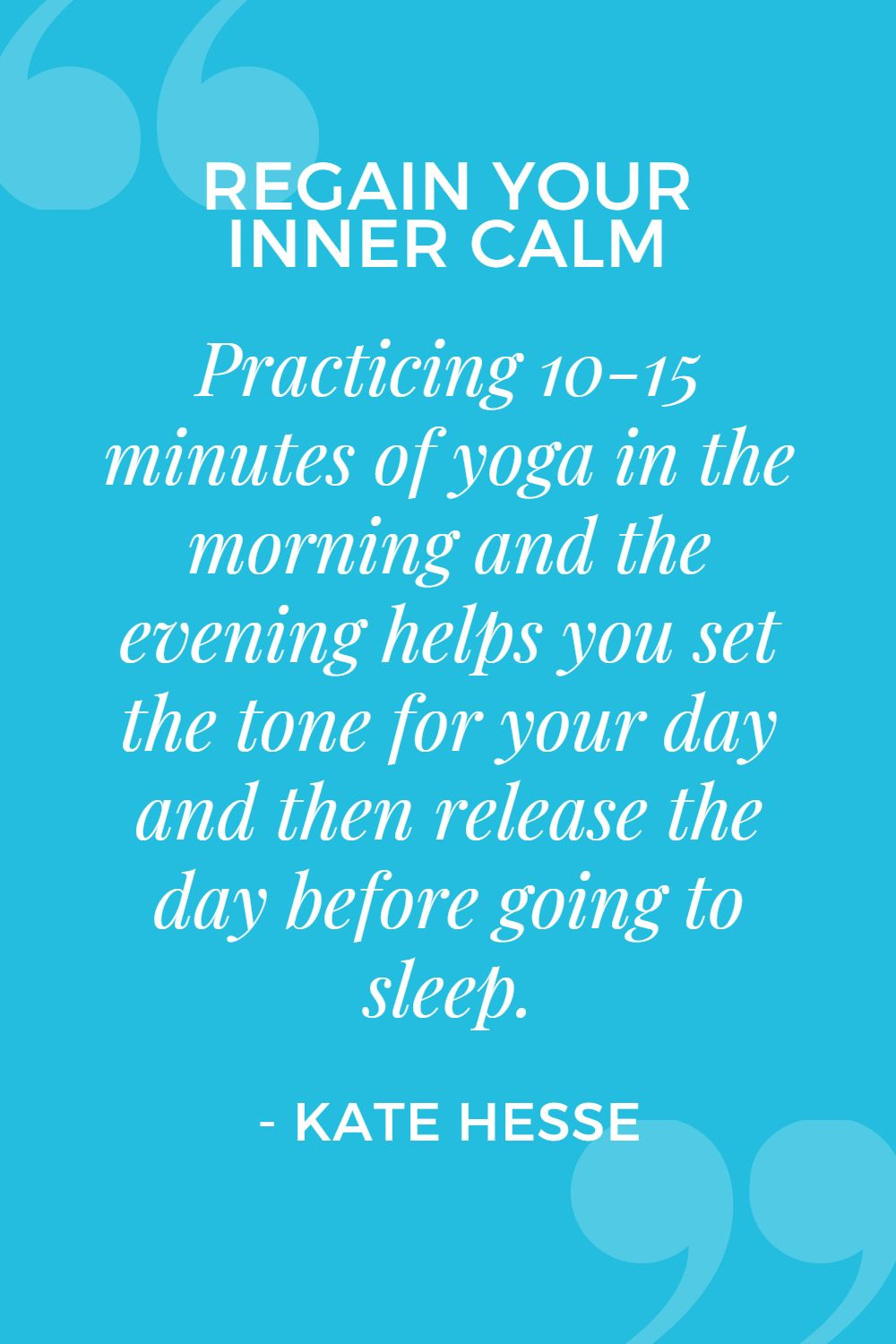 When I’m really stressed out, practicing in the morning and the evening is incredibly beneficial for me. In the morning I set my intention(s) for the day, and in the evening I release the day before going to sleep.
When I’m really stressed out, practicing in the morning and the evening is incredibly beneficial for me. In the morning I set my intention(s) for the day, and in the evening I release the day before going to sleep.
While I would usually choose a more energizing practice in the morning, since I’m working to bring as much calm into my life as possible right now, lately I have been turning to Yin and Restorative practices in the morning as well as in the evening.
The long holds in a Yin or Restorative practice provide me with the opportunity to focus on my breath and to work my way through my body and release my muscles as I relax from head to toe.
I’ve also been taking extended Savasanas and incorporating guided meditation or Yoga Nidra into them to increase the depth of relaxation I get from the practice. Even with the heightened stress level in the house, I often still walk out of the yoga room having regained my inner calm with a dreamy and relaxed look that causes Adam to ask if I just had a nap.
Breathwork (Pranayama)
I’m finding myself taking a lot more conscious deep breaths throughout the day than I normally do. In addition to the breathwork (pranayama = the Sanskrit term for breathwork practices) I incorporate into my morning and evening yoga practices, I’m also consciously breathing throughout the day.
When I notice my chest getting tight or my mind spinning away from what I’m working on, I’ll take a few moments for slow conscious breaths.
I pause, look out the nearest window at a tree, bird, cloud, ray of sunshine on the grass, anything calming in nature, and take a few conscious deep belly breaths. Just 30 seconds or a minute of this slow breathing is enough to remind my body to move away from the sympathetic nervous system state (fight, flight, freeze) and toward a parasympathetic nervous system response (rest and digest).
In addition to deep belly breaths, try this quick relaxation breath – it takes less than two minutes, and you might be surprised by the difference a few long, slow, intentional breaths can make!
Meditation and mindfulness
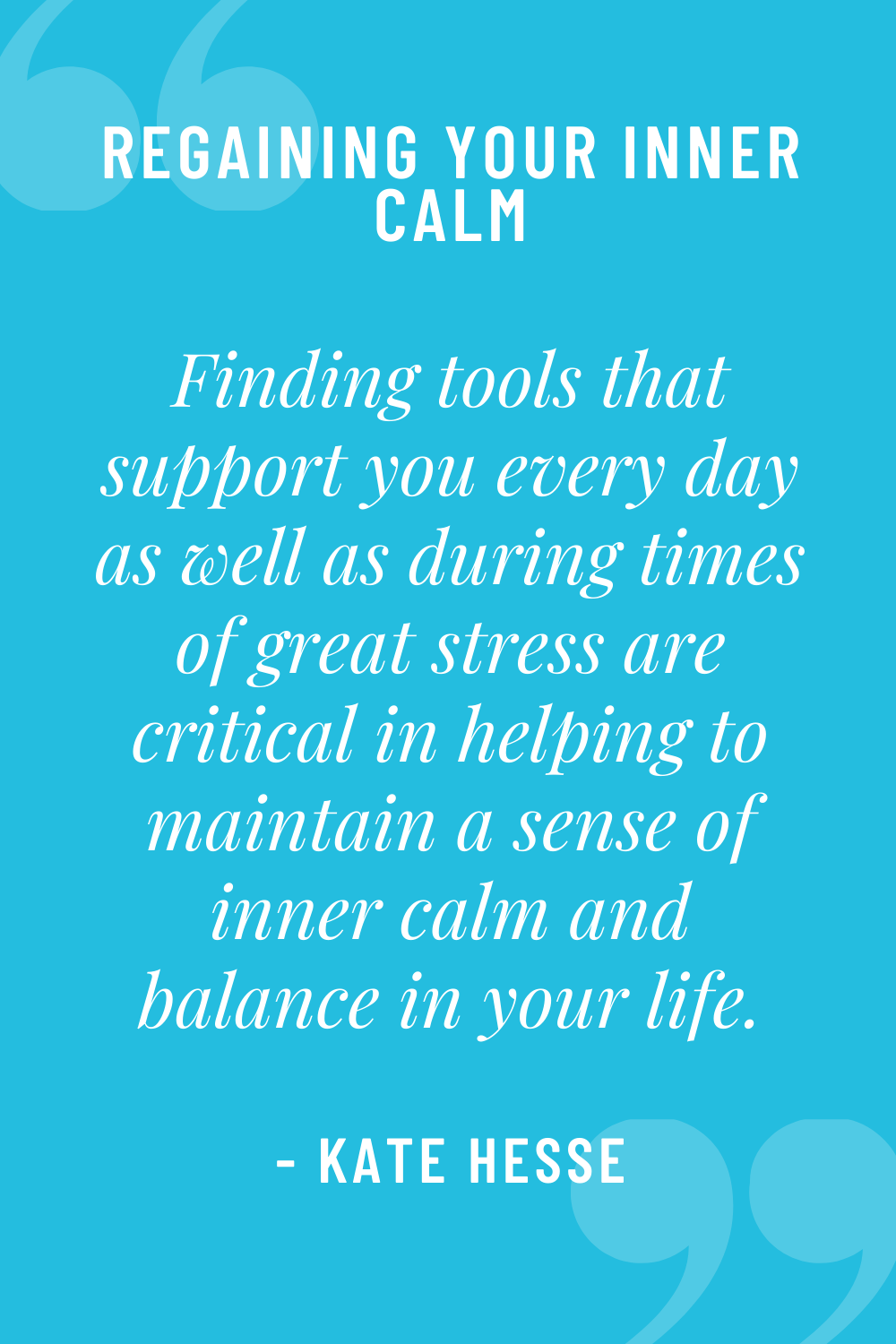 Meditation is always part of my daily yoga practice, however, when I’m really stressed, I spend a little more time on this practice than I usually devote to it.
Meditation is always part of my daily yoga practice, however, when I’m really stressed, I spend a little more time on this practice than I usually devote to it.
Instead of a 10 minute guided body scan, I might opt for the 17 minute recording instead. If everything is just feeling like too much by 2 pm, I’ll snuggle down on the sofa or in bed, pull a mask over my eyes, and guide myself through a grounding visualization.
Mindfulness
Mindfulness is also a tool I try to incorporate both on and off the mat throughout my daily life. Especially when I’m overwhelmed, I bring mindfulness into as much as possible.
I pay extra attention to the first bite of each meal – what does it taste like, smell like, how does it feel in my mouth. When I have a treat I wouldn’t usually go for on a daily basis (I’ve been indulging in a diary-free ice cream bar each day), I really try to appreciate all aspects of that treat as I eat it.
I bring mindfulness into my movement – giving myself fun little challenges (see the play section below) like moving around the house as though I’m gliding on skates, or flowing from one room to another like I was made of liquid. While I’m sitting at the computer, I pay attention to the noises outside and look out the window when the sounds change to see the trees move in the wind, a bird singing for a mate, raindrops falling on the window, or a neighbor out mowing their lawn.
Check out the Mindful Moment here for a powerful 60 second mindfulness technique!
Eating healthy and drinking plenty of water
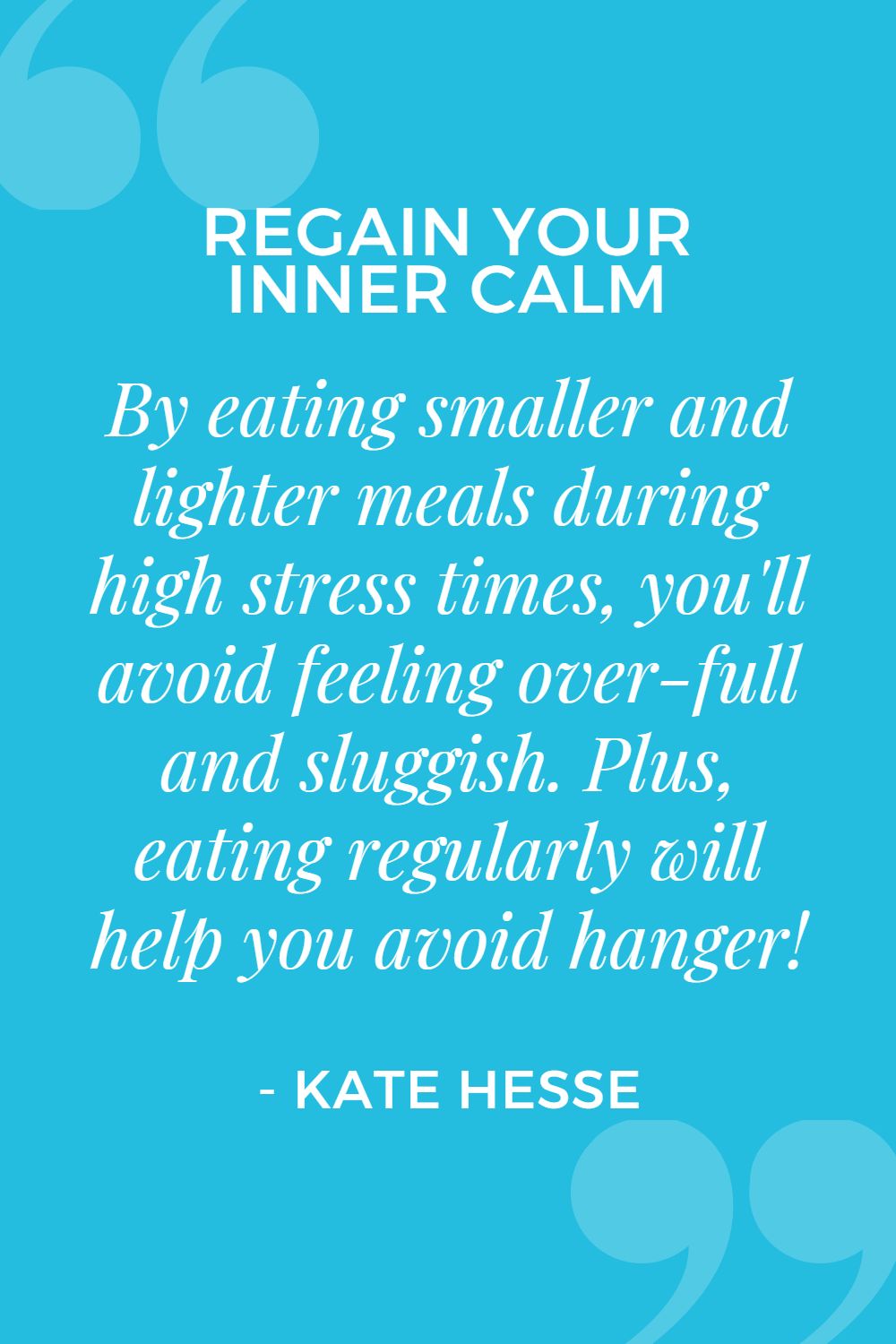 When I get stressed I tend to eat less. That ends up making me hangry and magnifying everything else that’s stressing me out. Plus I become a much less pleasant person to be around!
When I get stressed I tend to eat less. That ends up making me hangry and magnifying everything else that’s stressing me out. Plus I become a much less pleasant person to be around!
So I try to focus on eating when I’m hungry and making sure most of the food I eat each day is full of nourishing ingredients which help support my body through a stressful time.
I almost always drink enough water to stay really hydrated. But when I’m stressed, I make sure to focus on drinking even more water. Not only does this help ensure my body’s hydrated and has what it needs to function even under pressure, it also means I need to use the bathroom more often. And that means I need to get up from whatever I’m working on/stressing about, and shift my focus to taking care of my body.
If I’m especially stressed and I can’t calm myself down, I’ll eat smaller/lighter meals to help my body fully digest everything I’m taking in. When we’re stressed, it triggers a sympathetic nervous system response. Blood and energy is shifted from the core of our bodies to our extremities as we prepare to fight (or flee) for our lives. This means our digestion (among other systems) slows down.
By eating smaller and lighter meals during high stress times, I avoid feeling over-full and sluggish. This means I have one less thing to add to my list of worries during a time when everything might feel like a little too much.
Staying playful & getting curious
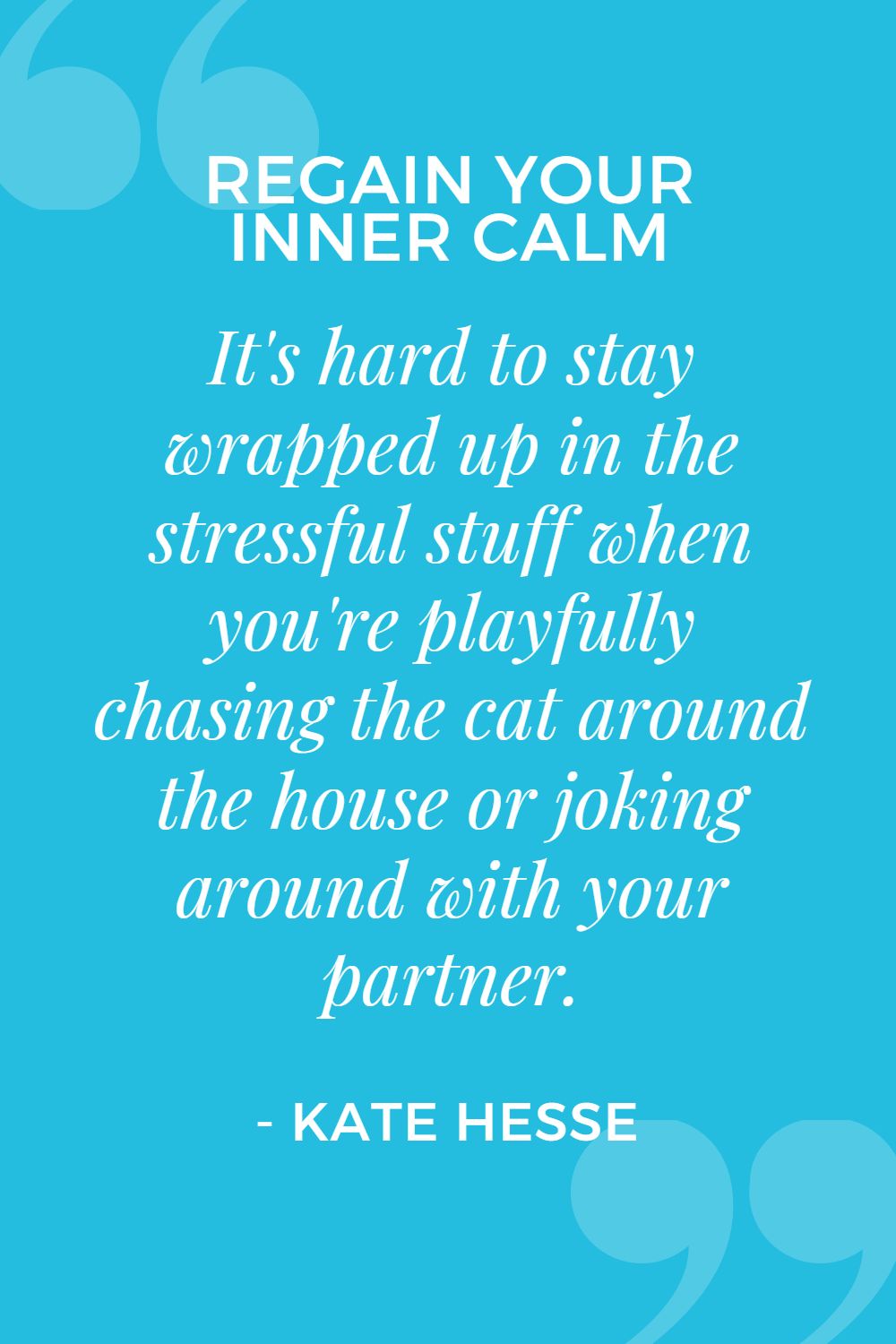 Staying playful is something Adam is much better at than I am. Luckily, he helps me to remember to prioritize this. Lada (the NourishNestBreathe cat) also regularly reminds me we need to have a little play time everyday.
Staying playful is something Adam is much better at than I am. Luckily, he helps me to remember to prioritize this. Lada (the NourishNestBreathe cat) also regularly reminds me we need to have a little play time everyday.
It’s hard to stay wrapped up in the stressful stuff when you’re chasing the cat around the house or joking around with your partner.
Staying playful brings laughter and lightness into an often heavy situation. I’m working to build up this tool and while I develop my playful muscle, I’m so grateful to Adam and Lada for regularly reminding me to play.
Get curious
Perhaps you’re the playful person in your life. But if you’re like me and learning to build this muscle, try to keep opposites in mind.
When you notice things feel really stressful, overwhelming and heavy, what would be the opposite of that? In my body when I feel the pressure of a heavy situation, I try to find a way to balance it out with a moment of easy breezy. Often this feels forced, but especially in those instances, I’m usually so ridiculous in trying to be easy breezy when feeling anything but that it makes us laugh despite the forced nature.
Especially when we’re stressed and overwhelmed, we tend to jump right to the worst case scenario. Getting curious also helps you see options and opportunities you might have otherwise missed. And even the act of consider less stressful options can help you regain a little more inner calm.
Employing energy work techniques
When my mind starts spinning, I’ll practice self-Reiki, even if just for a few minutes to help me settle back into a state of inner calm and peaceful ease. If I can pinpoint a specific stressor, physical/mental manifestation of that stressor, or symptom of the stress, I’ll use EFT (Emotional Freedom Technique, also called tapping) to help reduce the impact those things have on me.
Under normal circumstances, especially in times of high stress, I’d be visiting practitioners for energy/body work including: massage, Polarity, CranioSacral work and more to help me maintain and regain my inner calm. Unfortunately, many of these services are not as readily available in Missouri as they were in Arizona, and even if they were available, with the current social distancing guidelines, they’re not a practical option.
However, if you’re not comfortable (or trained) to practice energy work on yourself, there are several techniques which can be done by proxy or remotely. Explore Reiki, Emotional Code, Energetic/Applied Kinesiology, and others that can all be done during social isolation. If you need a recommendation for an energetic healer who works remotely, send me a message and I’ll connect you to a resource I can recommend!
Letting certain things go
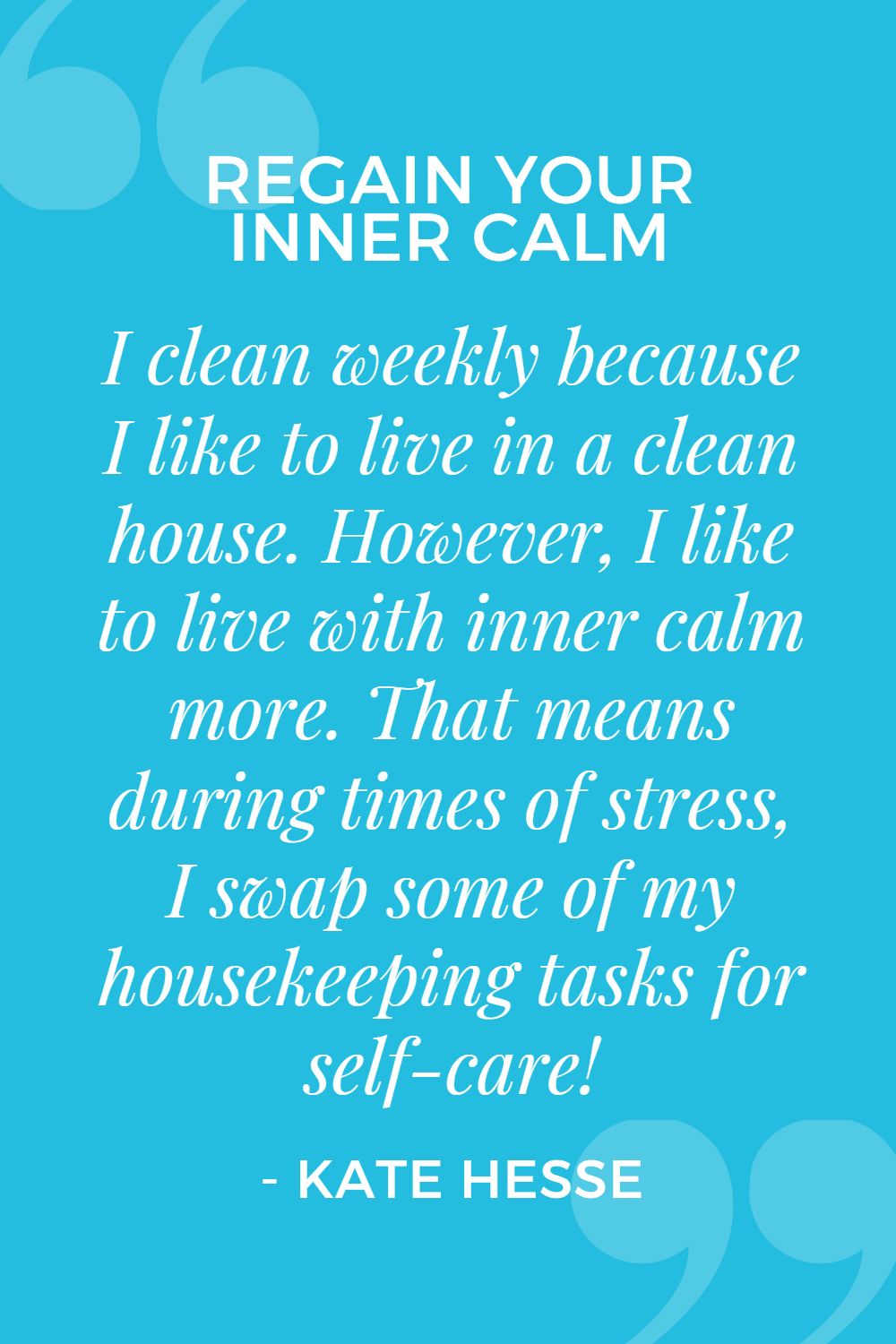 Under normal circumstances I do a full clean of the house once a week. Scrubbing the bathrooms, vacuuming the house, cleaning the kitchen, washing the laundry, changing the linens, etc. I clean weekly because I like to live in a clean house. However, I like to live with inner calm more.
Under normal circumstances I do a full clean of the house once a week. Scrubbing the bathrooms, vacuuming the house, cleaning the kitchen, washing the laundry, changing the linens, etc. I clean weekly because I like to live in a clean house. However, I like to live with inner calm more.
When I need to balance out stress and anxiety in my life with additional self care (I don’t normally have time in my schedule for 3+ hours of a personal yoga practice each day) something has to give.
I just listened to an older podcast episode from Noni at A Slob Comes Clean She was talking about applying her container theory to your daily schedule. In a nutshell – there are only so many hours in a day – if you want to add something in, you have to take something else out.
Housekeeping is one of the things I let slide when I need to prioritize my time to include more self-care. But it’s not only a matter of saying – ok, I’m not going to clean the house today – it’s just as important to give myself grace in not cleaning the house. I have to release it from both my literal list and my mental “should do” list or it will just add more stress and anxiety to the pile instead of helping me restore my inner calm.
Letting go of the “shoulds”
Think about the things on your to-do list that are there because you feel like you “should” do them. Consider what shift it would make in your inner calm if you were able to literally and mentally release just one each day from your to-do list and replace it with a nourishing self-care activity!
Learn more about identifying your “shoulds”.
We’re not cookie cutter humans
While these are the tools that work for me, I’d be really surprised if you found this set of techniques provided you with everything you needed to restore and maintain your own sense of inner calm.
You might have other things that work for you – dancing, singing, cooking, running, talking to friends, reading a good book are just a few options.
If any of my tools resonate with you and sound like something that might be helpful for you, give them a try. Approach it with a sense of curiosity (not expectation). Experiment, maybe instead of letting go of the housekeeping you ask your partner to cook dinner so you can squeeze in a 30 minute yoga session while they’re cooking. Or perhaps you set an alarm on your phone to look out the window every 30 minutes for just a few moments to notice the changes in the weather.
No matter what you choose to do, finding tools that support you every day as well as during times of great stress are critical in helping to maintain a sense of inner calm and balance in your life.
Wishing you the grace and ease to move through your day sailing on your own sea of inner calm.
If you need additional help find the techniques that work for you and building your self-care toolkit, consider setting up a Discovery Session with me. I’m currently taking a limited number of 1:1 clients – if you struggle with your inner critic and want to build an inner sanctuary, I want to help you!
Related
Leave a Reply Cancel reply
This site uses Akismet to reduce spam. Learn how your comment data is processed.